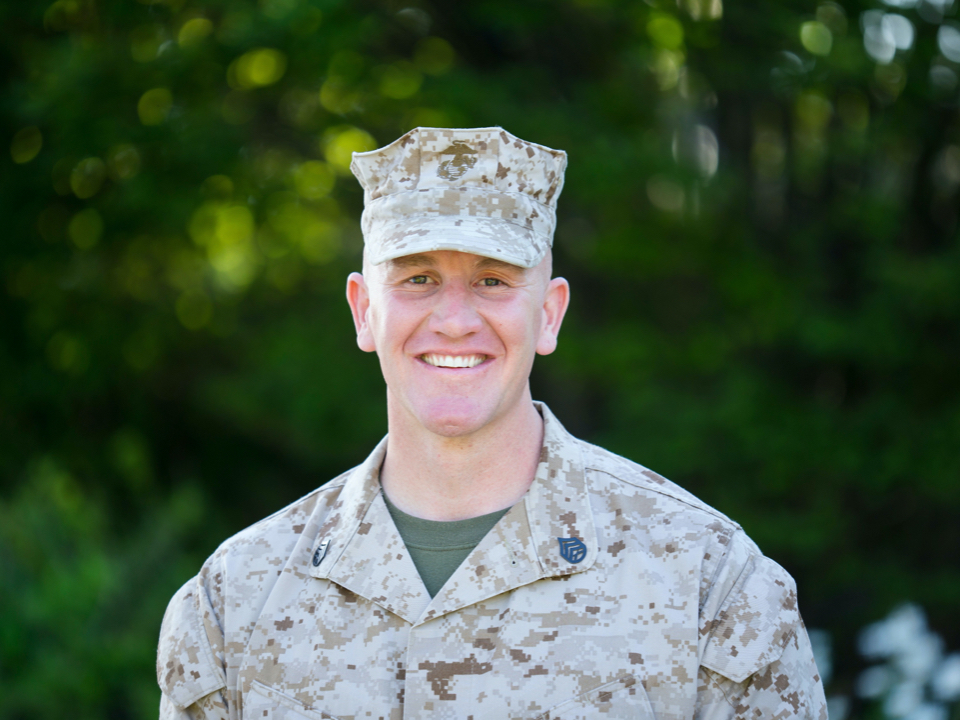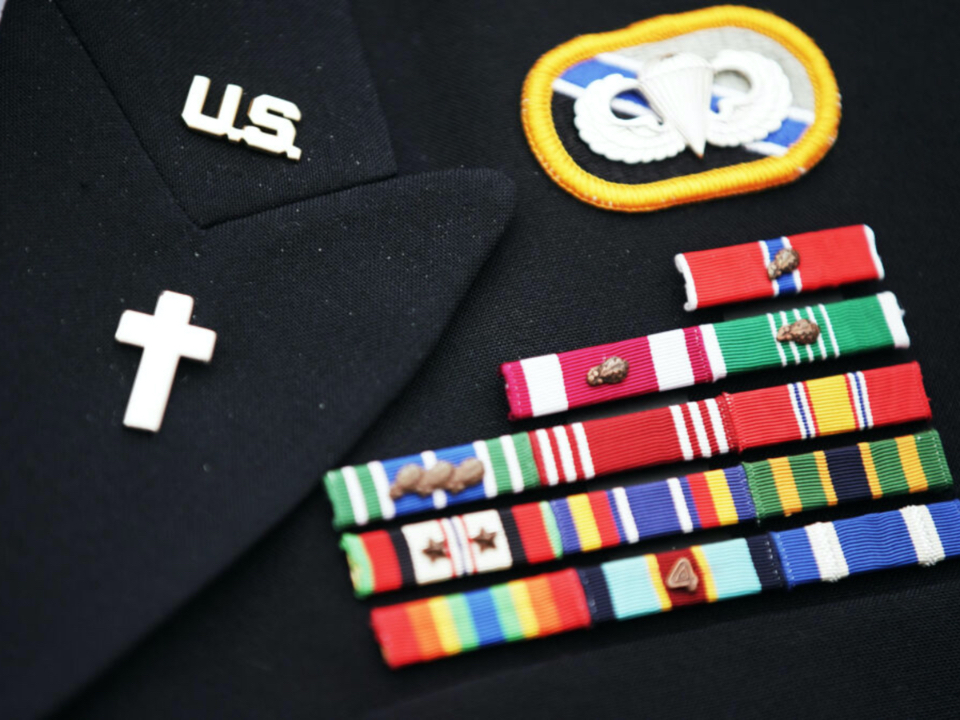
3f2709ee0b797fc9c89564856b7db83927a7dc49.jpeg
Portrait of a man dressed in a military uniform.2022 by Intellectual Reserve, Inc. All rights reserved.
This story appears here courtesy of TheChurchNews.com. It is not for use by other media.
By Jason Swensen, Church News
At this moment, Latter-day Saints serving in the military are stationed or deployed in almost all corners of the world. Legions of devout members wear the uniform of their respective countries.
Many are far from their families and loved ones. But no matter where they serve, they are never alone.
Regardless of a member’s nationality, spiritual and practical support is available through the Church’s Military Relations and Chaplain Services Division.

image001.png
C. Todd Linton, shown during his past service in the United States Air Force, directs the Church’s Military Relations and Chaplains Services Division. Photo courtesy of C. Todd Linton and Church News.All rights reserved.The division’s director, C. Todd Linton, said the Church is committed to looking out for every Latter-day Saint serving in the armed forces — and their families.
“Our primary mission is to support military servicemembers and their families — as well as chaplains and their families — in keeping and making covenants with the Savior and living this gospel,” said Linton, a retired Air Force colonel.
“For us, that entails providing the support, direction and guidance our members need — whether it is serving in the military or as a Latter-day Saint chaplain in a hospital," he said.
Such support comes in many forms. Providing gospel fellowship to a newly enlisted 18-year-old Marine or sailor can make a big difference as they transition into military life.
To that end, the Church’s Military Relations and Chaplain Services Division helps place military relations missionaries and senior service missionaries near United States military bases and training depots. Their proximity allows young Latter-day Saints still settling into their new, highly regimented military environments to find new friends and mentors — and a welcoming handshake and smile.
Welcoming Smiles From Military Relations Missionaries
For young recruits navigating the noisy rigor of basic training, a couple hours of peaceful Sabbath day worship can help them make it through the next grueling week. Military relations missionaries are typically allowed on U.S. training bases and service academies on Sundays to conduct sacrament meetings and gospel doctrine classes.
New recruits, cadets and men and women training for naval commission welcome the chance to get away for a few hours to attend church. “These young men and young women were probably the only ones who were disappointed when Church services went from three hours to two hours,” Linton joked.
The military relations missionaries generally hail from military backgrounds. They know well the armed forces culture and language.
“The missionaries are also there to say, ‘Hey, hang in there. I’ve been through some of these things myself,’” said Linton. “That is important ministering at a critical time in their lives.”
Church resources available to servicemen and servicewomen do not end at basic training. They can also reach out to the Military Relations and Chaplain Services Office when they are searching for a Latter-day Saint group leader during a deployment or other Church services.
“That’s when we can make the appropriate connections to provide the support and guidance to help them stay on the covenant path to salvation,” said Linton.
Church-sponsored service groups operating on forward deployment regions or on a naval vessel at sea provide Latter-day Saints with frequent opportunities to come together for worship services, gospel instruction, fellowship and fun.
Working closely with Area Presidencies, the military relations division helps establish and maintain service groups wherever Latter-day Saints are located.
“If a Latter-day Saint chaplain or a chaplain that can conduct Latter-day Saints services is unavailable, we can call a “distinctive religious group leader.”
As a Latter-day Saint, Linton knows well the power found in service groups. He has served as a group leader himself, enjoying kinship with folks of all backgrounds.
“What a blessing it was to be able to come together on Sundays with others,” he said.
In addition, the Church’s Military Relations and Chaplains Services Division’s website offers abundant resources, including a variety of videos for Latter-day Saint military families and a link to online sacrament services.
“But we also recommend that people simply reach out to us here at Church headquarters,” added Linton. “Reach out to the senior service missionaries and the military relations missionaries. You will find that you are never alone. ... We can rally forces of good during times of need.”
Developing and Endorsing Latter-day Saint Chaplains
Beyond providing support services to military members and their families, the Military Relations and Chaplain Services Division also plays a central role in identifying, developing and endorsing Latter-day Saint chaplains for service in the armed forces.
Stretching back over a century, the Church has a rich history of Latter-day Saint chaplains serving the U.S. military. But in recent decades, the Church has made deep inroads in fostering acceptance of military chaplains who are also practicing Latter-day Saints.
In the U.S. armed forces, military chaplains of all religious backgrounds are charged with providing spiritual guidance to men and women in uniform and their families. Whenever possible, they also help facilitate specific worship opportunities for servicemen and servicewomen.
“With everything that’s going on in the world, including this pandemic, the need for chaplains has grown,” said Linton.
“And not just military chaplains, but also civilian chaplains. So we also have Latter-day Saint chaplains that work with police forces. We have chaplains that work with the U.S. Customs and Border Patrol. We have chaplains that work in hospitals, universities and other institutions where people are in need of ministering," he said.

Chaplain.jpg
A Latter-day Saint chaplain’s military uniform. The Church develops and endorses chaplains for service in the armed forces of various nations. Photo by Jeffrey D. Allred, courtesy of Church News.Copyright 2022 Deseret News Publishing Company.
Looking out for Military Families
Latter-day Saints in uniform are often family men and women. They are wives and husbands. Mothers and fathers. The Military Relations and Chaplain Services Division is structured to support military families, especially during deployments when families are separated.
Linton also encourages military families to actively become part of their local Latter-day Saint community wherever they may be stationed.
“When you get to a new area, find the nearest Latter-day Saint chapel and make sure you go to church that first Sunday,” he said. “You will build your military family. They will be a source of support. You will find that there are a lot of people who love and care for you. They understand what you need and what you are going through.
“They will be there to help.”
Linton also encourages Latter-day Saints with no military ties to actively seek opportunities to serve military families.
“Remembering them is critical,” he said. “I can’t tell you how many deployments I have been on where I’ve gotten a random letter from a child in grade school thanking me for my service. ... It always made me feel like someone cared.”
A husband and a father of three daughters and a son, Linton recalls one particularly long deployment. The separation was challenging for everyone in the Linton family.
“But I will never forget the neighbor who came to our house and said to my wife, ‘I think you need some alone time. Why don’t you let me get the kids ready for bed and you can go read a book? That basic ministering and Christlike kindness meant so much to my wife and, ultimately, to our family. It was what the Savior would do, simply ministering in a loving and caring way.”
Copyright 2022 Deseret News Publishing Company.
